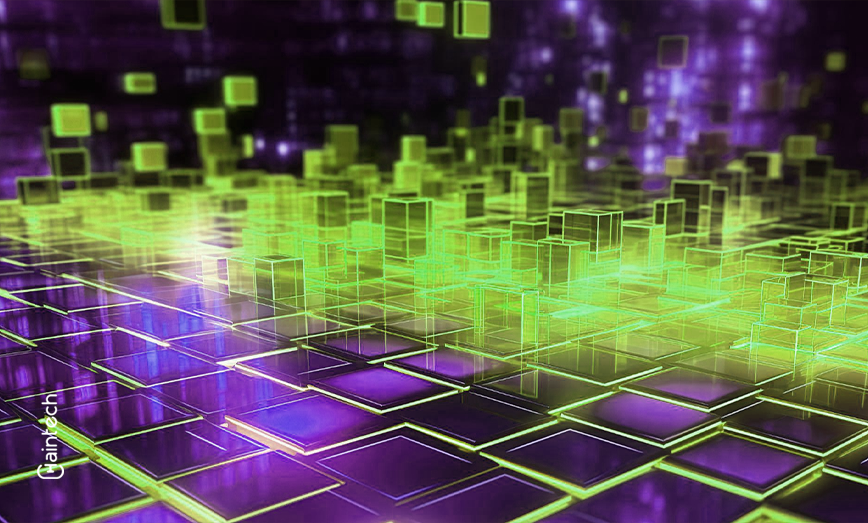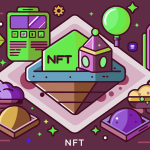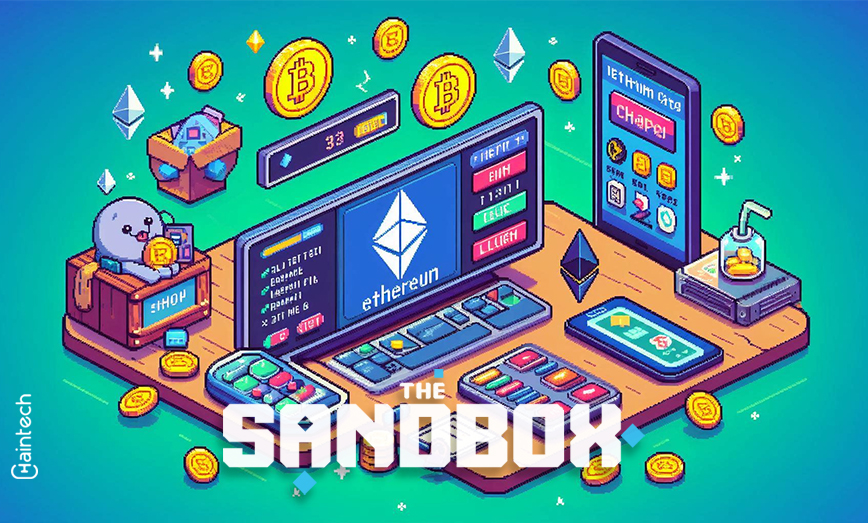Web 3.0 Built on Blockchain: Here’s Why

Consider this: What if you had complete control over your online identity wherever you go? How would it feel if your data belonged to you and was tucked away so no single organization could actually abuse it? This is the vision that lies at the core of Web 3.0, where blockchain technology is fundamental in changing the internet for the better of the users.
Advent of blockchain technology in web 3.0
- Blockchain in Web 3.0 stands for users and their decentralization.
- The two principal threads are security and privacy of data, with an emphasis on making web activities safer through the use of blockchain.
- The industries are being transformed by practical instruments such as identity systems and decentralized finance (DeFi).
Keep on reading to understand how blockchain enables Web 3.0 and what it’s all about.
The progression that leads from the internet up until web 3.0
For us to comprehend why Web 3.0 is widely regarded to be built on blockchain, let us first look at the internet’s historical trajectory. The global network started with Web 1.0 in the second half of the 1980s. This can be characterized as “read-only,” as users could see information but could scarcely interact. This period was revolutionary in its time, yet it had its constraints, primarily static resources with minimal user participation.
Next came Web 2.0, which made the internet interactive. People for the first time could make profiles, upload content, post and share with people actively through Facebook and Twitter platforms.
The Web 2.0 phase is characterized by the idea of content creation by users along with e-commerce growth. This enables people to purchase, sell, and share over the internet. Nevertheless, these abilities came with new challenges as companies started acquiring great user information.
Web 3.0, also referred to as the ‘decentralized web’, has a completely different narrative because control is said to change as people are provided ownership of their data. Here, the focus shifts to blockchain technology. This ensures data privacy and decentralization in ways that were never experienced before.
The emergence of Web 3.0 and the role of blockchain platforms
Web 3.0 has introduced a decentralized internet where users are more than just consumers since users can control their data and their digital identity. This vision promotes utilizing blockchain platforms like Ethereum as it brings understanding towards decentralization.
Thanks to blockchain technology, information can be kept in numerous places (or nodes), thus making it decentralized and secure. More importantly, there is no need for database servers, which pose as single points of failure regarding system breaches.
Last, but not least, there is a feature of blockchain for self-sovereign identities, and users can create and manage within their digital space without the need for an administrative body.
Smart contracts are a good illustration of this phenomenon. In systems such as Ethereum, these contracts are executed automatically and facilitate interactions between unrelated parties without needing to trust. They came about in connection with applications using decentralized finance (DeFi) and non-fungible tokens (NFTs), where users can interact with each other without having a broker.
Did You Know?
In 2024, many sectors will likely gain rapid growth traction since they will begin to employ the features of blockchain applications within the scope of Web 3.0.
Web 3.0 is the third stage of the internet, and this is how you interpret it:
So, what is Web 3.0? In basic terms, it emphasizes making the internet more self-sustaining. Things like AI, IoT, and blockchain are used to make strides in ensuring privacy and security in online transactions.
Web 2.0 was designed so that platforms could fill the role of a mediator in P2P transactions, but it also meant that platforms control most of the user information. The blockchain tackles this, providing a neutral structure where no entity is solely controlled. It solves problems of trust and privacy, which Web 2.0 could not address fully.
As Web 3.0 is based on blockchain, it allows this interaction mode without any centralization, enabling new forms of applications.
- Web 3.0 technologies and applications: Web 3.0 introduces several new applications that are built to counteract some restrictions of Web 2.0:
- Decentralized social networks: In Web 3.0, no Facebook company owns social networks anymore. Instead, all users own their data, significantly reducing the problems of censorship and data exploitation witnessed on previous platforms.
- Decentralized finance (DeFi): By virtue of DeFi, even customers without the application of traditional banks can perform financial activities. Using blockchain technology, DeFi networks facilitate accessibility to financial services that allow lending, borrowing, and exchanging between users.
- Digital identity management: Companies apply this type of management to digital identities. This allows customers to manage their online imagery independently, thus reducing dependence on external platforms. Such practices of identity management are termed self-sovereign identity.
- Supply chain transparency: Machine learning can reduce cryptocurrency scams, in part, by more efficiently predicting fraud.
- Content and intellectual property: Blockchain facilitates transparency throughout the supply chain by providing a ledger of every transaction and contract involved. Companies can assure customers of the legitimacy of their products and the source of materials used in facilitating the production.
The role of blockchain in Web 3.0 advancements
Blockchain’s decentralization and security aspects are driving factors in Web 3.0. Blockchain protocols offer interoperability, allowing seamless exchange of data and assets across networks. This interconnected system provides an environment where information flows freely, supporting applications like smart cities and IoT networks.
Consider a smart contract. It’s essentially a set of coded rules stored on a blockchain that automatically executes transactions when certain conditions are met. This creates a reliable framework for Web 3.0 applications where transactions happen securely without needing a central authority.
| Use Case | Description | Blockchain Feature | Benefits | Example |
| Decentralized Social Media | User-controlled platforms | Data Ownership | Reduces censorship | Mastodon |
| DeFi | Direct financial transactions | Trustless systems | Lowers transaction costs | Aave |
| Digital Identity | User-controlled identity | Self-sovereign ID | Increases privacy | Sovrin |
| Supply Chain | Traceable product origins | Immutable records | Verifies authenticity | IBM Food Trust |
| NFTs | Digital ownership | Unique tokens | Helps artists monetize | OpenSea |
Practical applications: blockchain in Web 3.0
Blockchain applications in Web 3.0 are vast. Here are a few areas where it’s making a significant impact:
- Universal Identification: With the help of blockchain-based identities, there is no need to have third parties who manage sensitive data, thus increasing privacy.
- Improved Security: It gets difficult for hackers to penetrate the database owing to the non-centralized system of the block chain.
- Ownership Control: Through the use of block chains, users are able to directly own their data and any digital assets they may have.
In addition, blockchain simplifies how organizations manage user identities. With blockchain, consumers can have a single digital ID that’s secure, private, and universally recognized across platforms. This not only reduces dependency on centralized entities but also strengthens privacy.
Web 3.0: How blockchain made the future possible
By offering a decentralized framework, blockchain technology made it possible to develop Web 3.0. It started with the blockchain of Bitcoin, which featured a P2P network whereby a single organization could not own all the data. This concept has expanded with protocols allowing for a consensus-driven data storage approach.
Each participant on a blockchain network contributes to its security, incentivized by native tokens. This structure ensures that data is secure, transparent, and immutable. It is providing a base for the more complex applications of Web 3.0.
Application of technology in Web 3.0: Blockchain
Due to the die characteristics of blockchain, which can secure important records while also including transparency and protection against theft. There is a significant demand for blockchain in numerous domains, so let’s explore a few of its use cases, for instance:
- Identity Management: Blockchain has the potential to replace passwords by allowing the use of secure and user-managed unique IDs.
- Decentralized Advertising: Blockchain guarantees accountability in ad campaigns by capturing reporting and interaction events in a reliable manner.
- Electronic Medical Records: These databases are trustworthy, do have limited accessibility to authorized users, as well as being certain that they cannot be altered.
- Smart Contracts in Transactions: Transactions can be simplified and cut without third party agents, which will save both time and cost.
- Monitoring of Supply Chains: Transformation of product quality and safety may be done after the whole life cycle since they can be traced.
Blockchain in web 3.0: building a decentralized, secure, and user-centric internet for the future
In short, WE stress once again the role of blockchain technology in Web 3.0. It’s not only based on technology. But also on building the structure of a new internet that respects the user, privacy, and visibility. By enabling such a wide array of applications as DeFi, decentralized social networks, and secure identity, blockchain is changing how we interact on the web.
This movement offers a new higher security level and better control while being more user-centric. The web is a major change in the presentation of our everyday digital world.
Did You Know?
Blockchain can provide universal digital IDs for more secure online interactions.
FAQs
1. What is Web 3.0, and how does it differ from other versions of the Internet?
Web 3.0 is the next step in the evolution of the web’s capabilities as it becomes more decentralized, user-controlled, and private. While in Web 2.0, there were centralized authorities, today, with the development of blockchain technology, such authorities are not mandated.
2. What Among Other Technologies is Responsible for Data Security in Web 3.0 and How It’s Related to Blockchain Technology?
Since corporate data storage and maintenance is a highly sought-after challenge for intruders, rather than controlling just one source of information, blockchain technology assures that each piece of data is secured without the possibility of a sole point of vulnerability.
3. Write a little about the use cases of blockchain technology in Web 3.0.
Blockchain is applicable in the environments of decentralized finance (DeFi), digital identity creation and management, supply chain integrity promotion, and privacy-invoking social networking sites.
4. In what ways does blockchain aid in the growth of decentered finance (DeFi) within Web 3.0 networks?
Decentralized finance, or DeFi, is enabled because the services offered eliminate the need for middlemen and allow users to execute transfers privately. Thanks to blockchain networks, users can lend, borrow, or trade any assets directly.
5. Smart contracts and their application in Web 3.0 eternal technologies essay
So, wise contracts happen to be self-contained digital codices that have been integrated into blockchain and can be activated independently without being mediated by a third party. In Web 3.0, these mechanisms guarantee trustless transactions and facilitate DApps in different areas across the globe.









